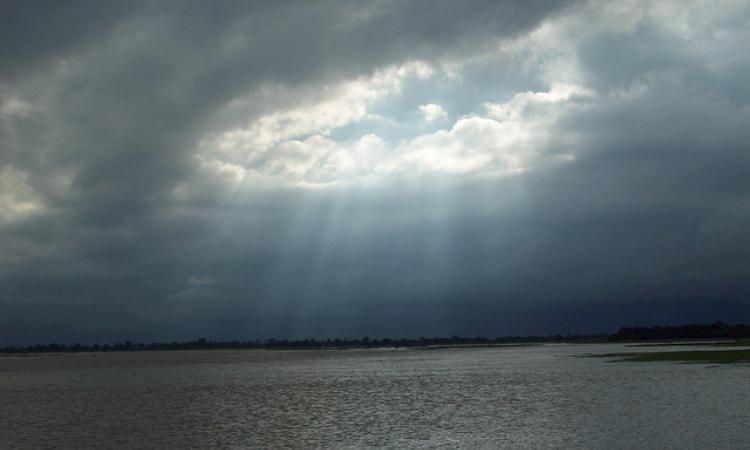
Artificial lake in Brahmaputra in China, flood threat in Arunachal Pradesh and Assam wanes
On October 18, a landslide in China created an artificial lake on the Tsangpo river, the headwater of India's Brahmaputra river. Following the formation of the lake, a high alert was issued in Arunachal Pradesh and Assam for possible flash floods and people along the Siang river were moved to safer places. Sharing of hydrological data by China's water department is being appreciated for averting a possible disaster. China had stopped sharing hydrological data since last year, resuming it only from May 15, 2018. As of now, the water level in the Siang river has returned to normal but the close monitoring of the landslide situation will continue.
Maharashtra and Bihar reeling under drought
As per the National Centre for Crop Forecasting (NCCF), 32 out of 36 districts in Maharashtra are facing drought-like conditions this year. The affected districts are spread out across Vidarbha, Marathwada, north and west Maharashtra and the Konkan region. Prior to officially declaring the drought, the state will be conducting manual verification of conditions on the ground. While Maharashtra is yet to declare a drought, the Bihar government has already declared 206 blocks in 23 districts as drought-hit.
Solid waste hinders Ganga clean-up
During a presentation before the union water minister Nitin Gadkari, the urban affairs ministry has revealed that, of the 11,625 tonnes per day of municipal solid waste generated from 97 cities and towns along the Ganga river, only one-third of the solid waste is processed. With 6,132 tonnes of waste per day, West Bengal has the maximum share of solid waste generated, followed by Uttar Pradesh and Bihar. To deal with the crisis, the urban affairs ministry has proposed to focus on segregating wet and dry waste rather than waiting for new waste processing plants to be ready.
Dolphin population in the Ganga on the rise: Survey
As per the survey conducted by the World Wide Fund for Nature-India in collaboration with the Uttar Pradesh Forest Department, the population of dolphins in the Ganga river has increased from 22 in 2015 to 33 in 2018 which includes three calves. The survey was conducted from October 10 to 15 over a stretch of 205 km from the Bijnor barrage to the Narora barrage along the river. The presence of three calves along the stretch indicates that the slow-breeding dolphins have flourished in the river and a healthy diversity prevails.
Study finds global warming causing decline in Lakshadweep’s coral cover
According to a two-decade-long study conducted by the Oceans and Coasts Program of the Nature Conservation Foundation’s (NCF), a staggering 40 percent decline has occurred in the coral cover in the Lakshadweep islands during the study period due to severe climate change-related disturbances. The study has also found that the El Nino events kill large tracts of coral and that the occurrences of these events are on the rise. The slow rate of recovery of corals from these events is further aggravating their decline.
This is a roundup of important news published between October 16 - 22, 2018. Also read policy matters this week.